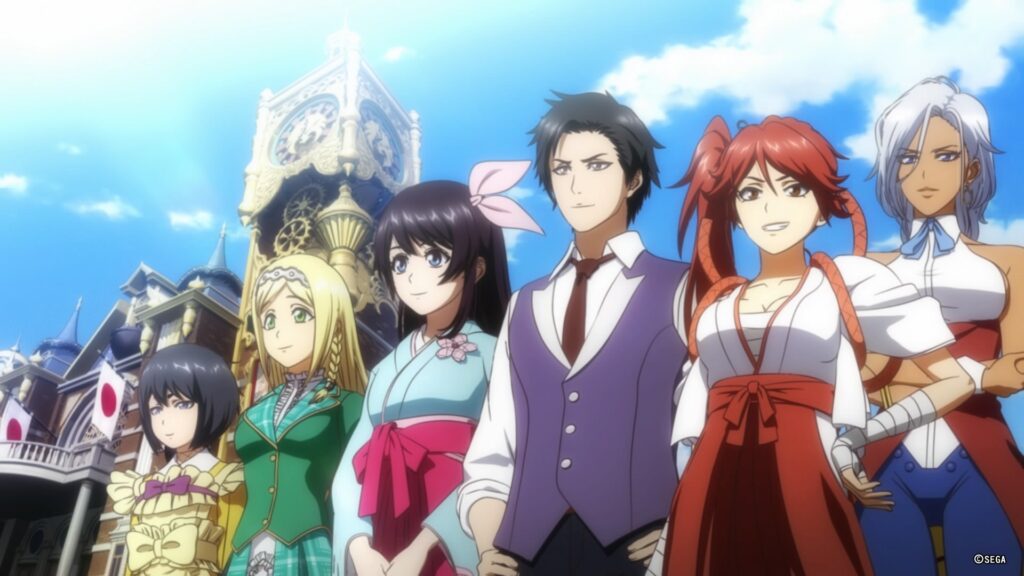
Despite having five mainline entries, multiple anime series and movies, light novels, and many other pieces of media, Sakura Wars is a relatively unknown franchise for many westerners.
This is no doubt due to the fact that only one of the games was ever officially localized and released in America. I myself have what can barely be described as a passing understanding of the series. It’s a franchise I’ve heard of, but never actually gotten into before.
After an extended hiatus, Sega has finally revived the series with a new video game, along with an anime sequel that is currently just a few episodes in. While I can’t really judge the new Sakura Wars on the basis of how it compares to its predecessors, I still had a lot of fun with it.
Sakura Wars
Developer: Sega
Publisher: Sega
Platform: PlayStation 4
Release Date: April 28th, 2020
Players: 1
Price: $59.99
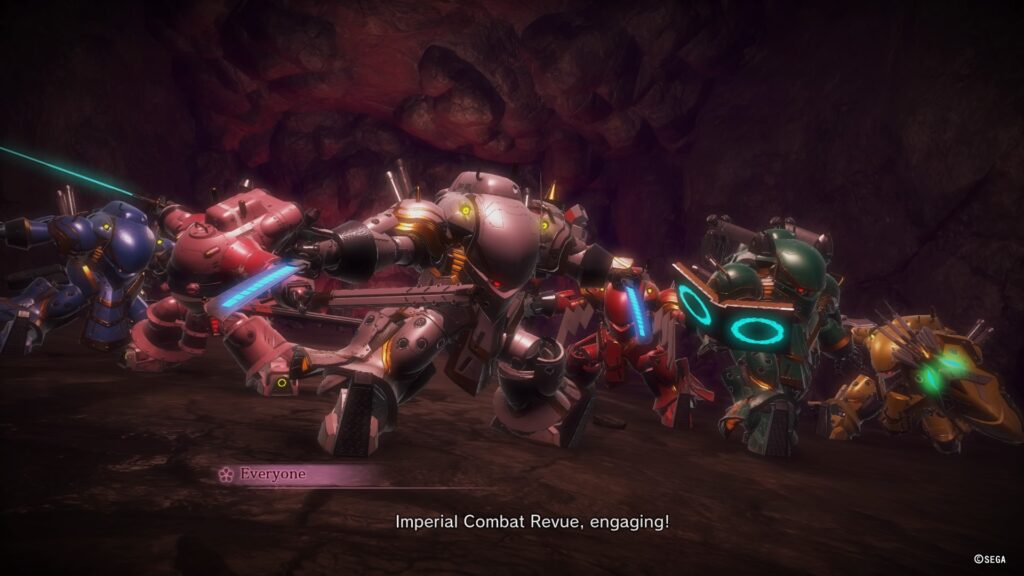
If you are a complete Sakura Wars newbie like I was, then you’ll be happy to know that this new game is extremely approachable; due to its status as a soft reboot set 12 years after the last game.
Sakura Wars is self-contained enough that you don’t need any prior knowledge of the series to enjoy it. The game focuses on an all new cast, and gradually introduces concepts, cameos, and callbacks to the original games at a steady pace.
Two years following the events of So Long, My Love, Tokyo was engulfed in a cataclysmic conflict that would later become known as the Great Demon War. A desperate gambit by the combined forces of the Imperial, Paris, and New York Combat Revues was able to seal away the Archdemon and his forces.
Unfortunately, none of the heroes of the world’s first three Combat Revues came back from the final battle. With the Combat Revues devastated, and the near annihilation of the world, the World Luxuriant Opera Federation is formed. This international organization began establishing new Combat Revues across the globe, and also acts as an intermediary to coordinate operations between Revues.
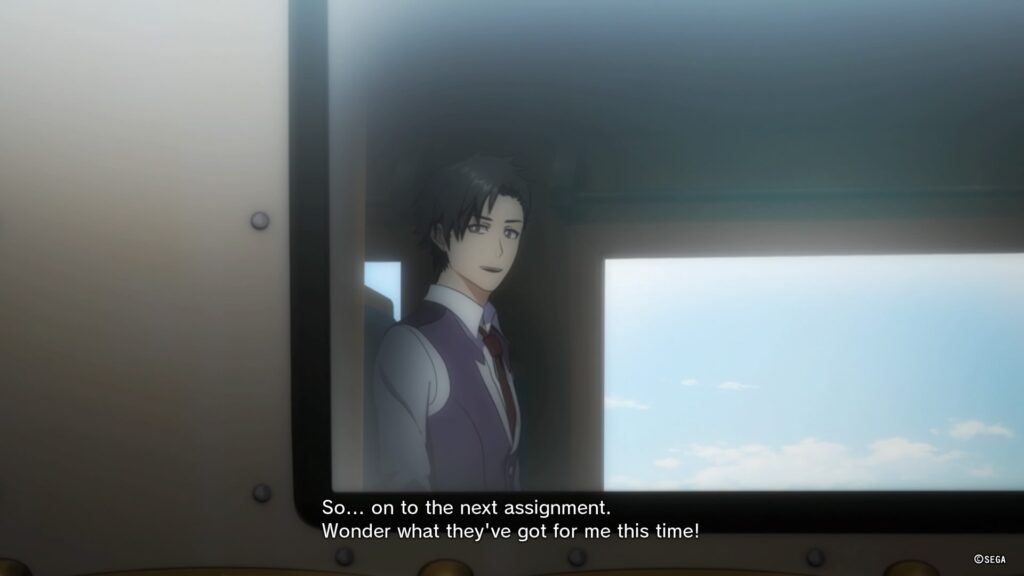
The game picks up a decade after the Great Demon War. Tokyo has been rebuilt, and while sporadic demon attacks are still part of daily life, the world is largely at peace and has entered a new golden era of technological innovation and prosperity.
Sumire Kanzaki, the sole remaining member of the original Imperial Combat Revue’s Flower Division, wishes to see the group restored to its former glory. Unfortunately, the new Flower Division is clumsy and inexperienced, both on the stage, and on the battlefield.
Worse still, the current president of WLOF is suspiciously antagonistic towards Sumire, and is looking for any excuse to close down the Imperial Combat Revue for good.
You play as Seijuro Kamiyama, a former naval ensign that is recruited by Sumire to become the Flower Division’s new captain. Your job as Seijuro is to unite the dysfunctional Flower Division by helping its members get over their individual flaws and insecurities.
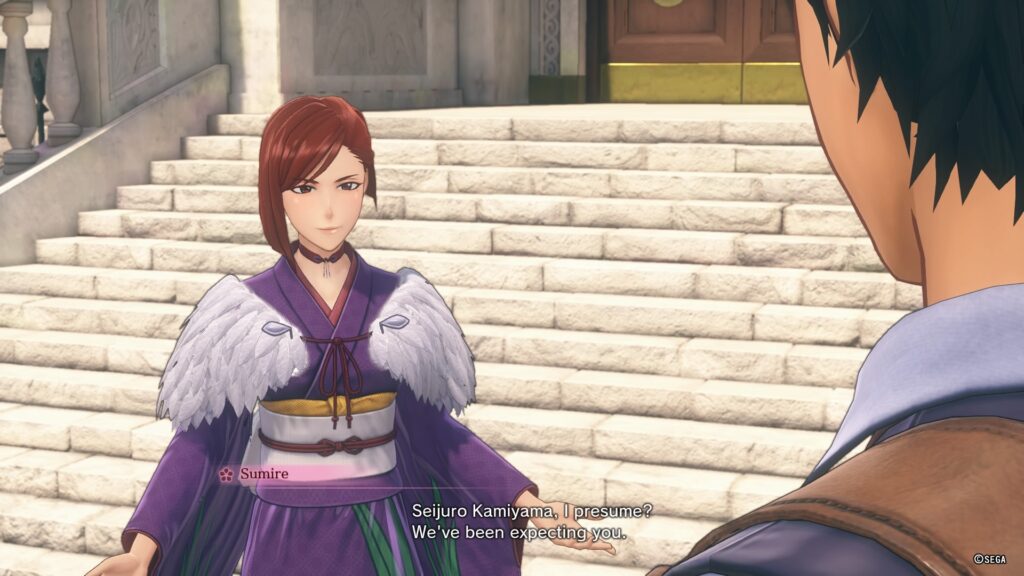
If the daunting task of getting the Flower Division to work as a perfectly coordinated team wasn’t enough, there is also the looming threat of the World Games. This biennial event is a competition between Combat Revues from across the world, each eager to show off their skills.
With the games being held in Tokyo this year, Sumire is determined to see the newly revived Flower Division prove their might by winning the games. The competition is fierce, with the feisty Shanghai Combat Revue, the chivalrous London Combat Revue, and the strictly-disciplined reigning champions of the Berlin Combat Revue being the Flower Division’s main rivals.
Like its predecessors, Sakura Wars is first and foremost a visual novel with a heavy emphasis on dating sim elements. As you interact with the five female members of the Flower Division, and help them realize their potential on and off the battlefield, you’ll gradually get a chance to date them.
The game lets you casually pursue them all at once, but eventually you’ll get to a very obvious “final choice” point that determines which girl’s ending you get.
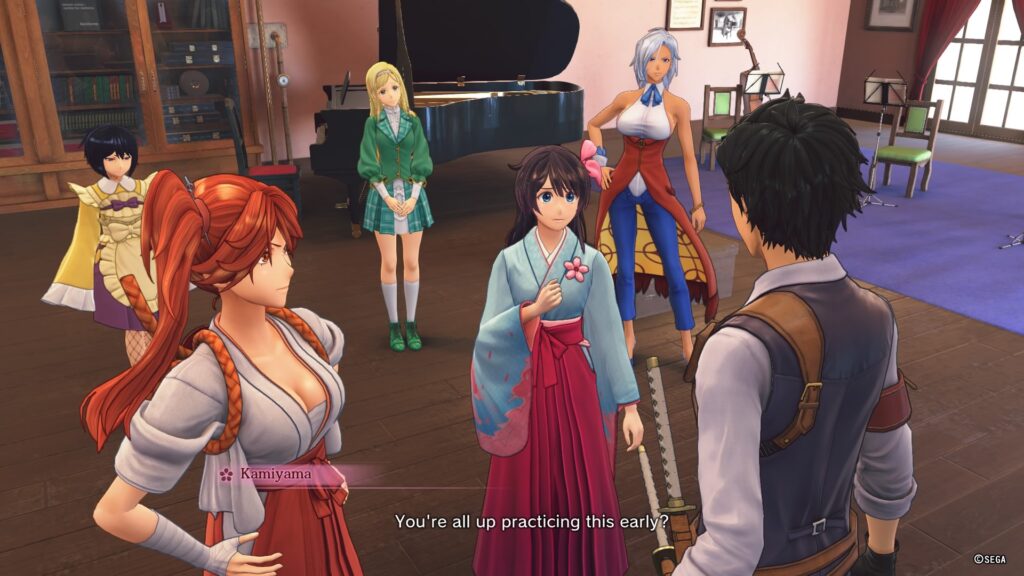
The girls run the gambit of popular anime waifu tropes. Sakura Amamiya is arguably the game’s true main character, and plays the role of the old childhood friend-turned-love interest. She is clearly being set up as the franchise’s new Sakura Shinguji. She was even motivated to become a member of the Flower Division after being saved by Sakura during the Great Demon War.
Hatsuho Shinonome is Sakura’s best friend. She is a busty and boisterous shrine maiden that conforms to all the usual tomboy stereotypes, right down to using her cheery and outgoing personality to cover up her inner insecurities.
Clarissa Snowflake, commonly known as “Claris,” is a bookworm that dreams of becoming a famous writer. She is socially awkward and constantly doubting her abilities as both a scriptwriter, and a member of the team in combat.
Anastasia Palma is a world-famous actress that is brought on to help the Flower Division in their role as performers at the Imperial Theater. She starts out a bit cold and distant, but gradually becomes a beloved mentor to the other girls.
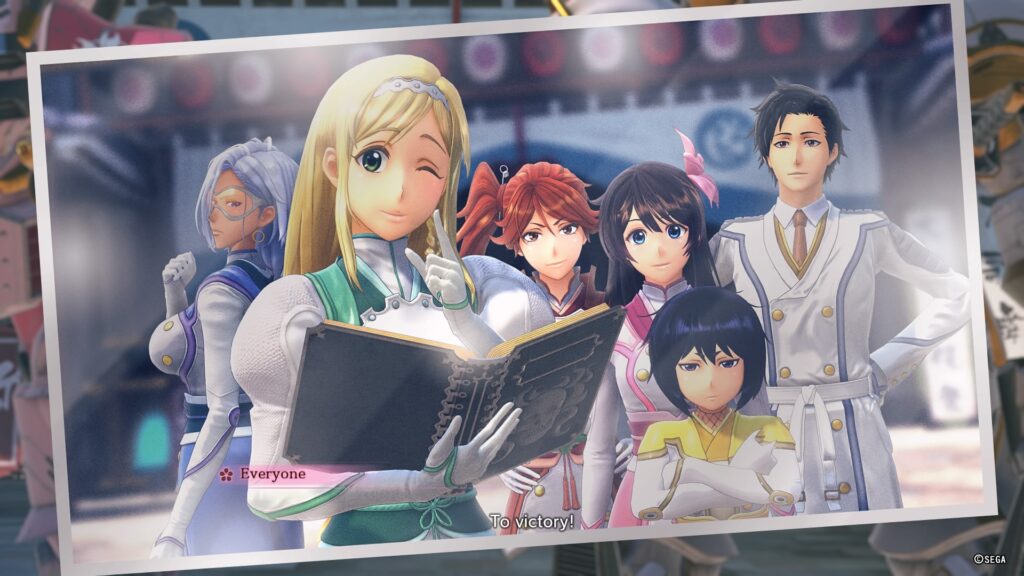
Finally, there’s Azami Mochizuki, an enigmatic ninja that starts off as your classic emotionless anime child, that slowly comes out of her shell. While you can “choose” her like all the other girls, her relationship with Seijuro isn’t really romantic in nature. The two’s dynamic is much closer to a brother and sister relationship.
There are plenty of other characters you’ll interact with as well, like the Flower Division’s mechanic Reiji, the Imperial Theater super fangirl Itsuki, and Kaoru- Sumire’s personal assistant and head of the group’s finances.
The London, Shanghai, and Berlin Combat Revues also each have two ace pilots that you’ll see around town that you can chat with. Some of them are teased as potential love interests, but ultimately only the main Flower Division girls can be pursued as a romance option.
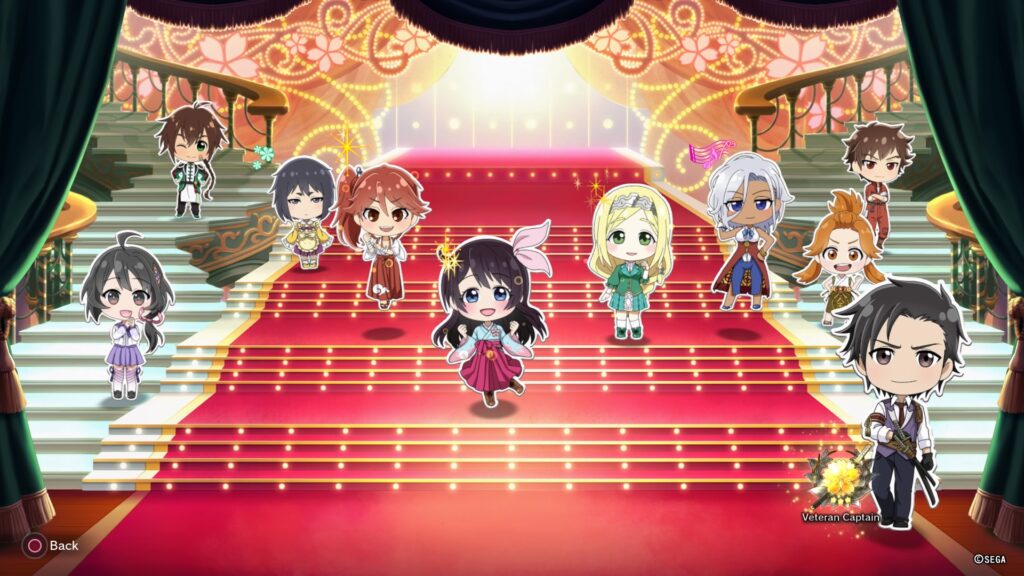
Sakura Wars is famous for its catchy soundtrack, and this new installment is no different. There is a new version of the classic opening song Geki! Teikoku Kagekidan, and each of the main girls have their own theme songs.
There is also a theme song for each of the Flower Division’s three rival Combat Revues. These individual theme songs are just as addictive as the opening, and really nail the personality and feel of the characters they represent.
On the subject of audio, be aware that Sakura Wars isn’t really “localized.” That is to say, the only way to play is Japanese audio with English subtitles, just as God intended. Being the sort of person who watches their anime subbed anyway, I didn’t mind. If you are the kind of person who only likes dubs though, be aware that you won’t get that here.
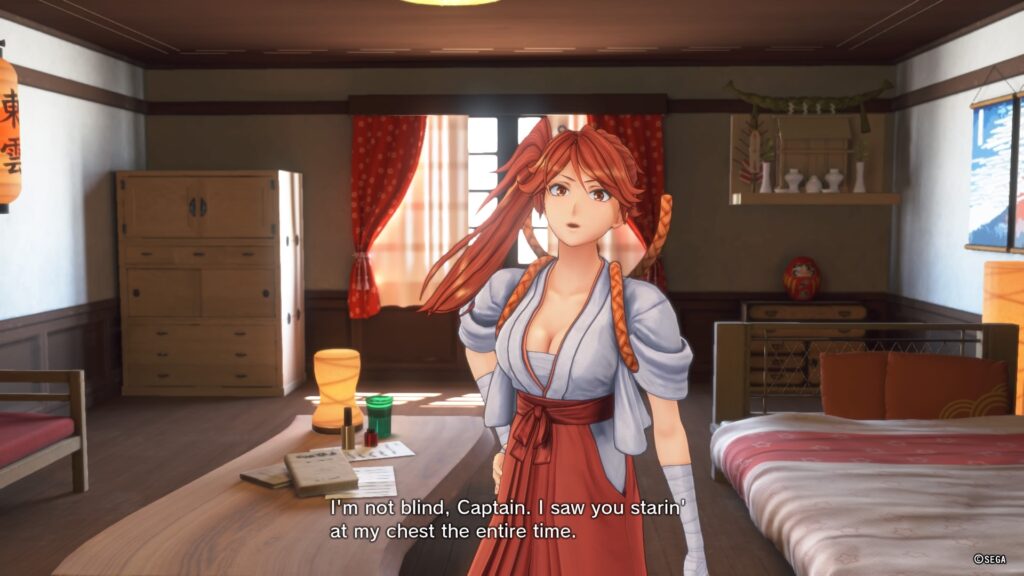
The game is divided into eight “episodes,” complete with show breaks that act as save points and previews of the next chapter. The story bounces between three main plots.
Those plots being the daily life and operations at the Imperial Theater, defending Tokyo against a new group of mysterious greater demons (one of which looks oddly familiar…), and the World Games competition. Each of the five girls also effectively get an episode focused on them that further develops their character, and their growing relationship with Seijuro.
Since Sakura Wars is effectively a visual novel with some minor free-roaming and exploration elements, most of the gameplay revolves around conversations. The Live Interactive Picture System (LIPS) returns from the previous games.
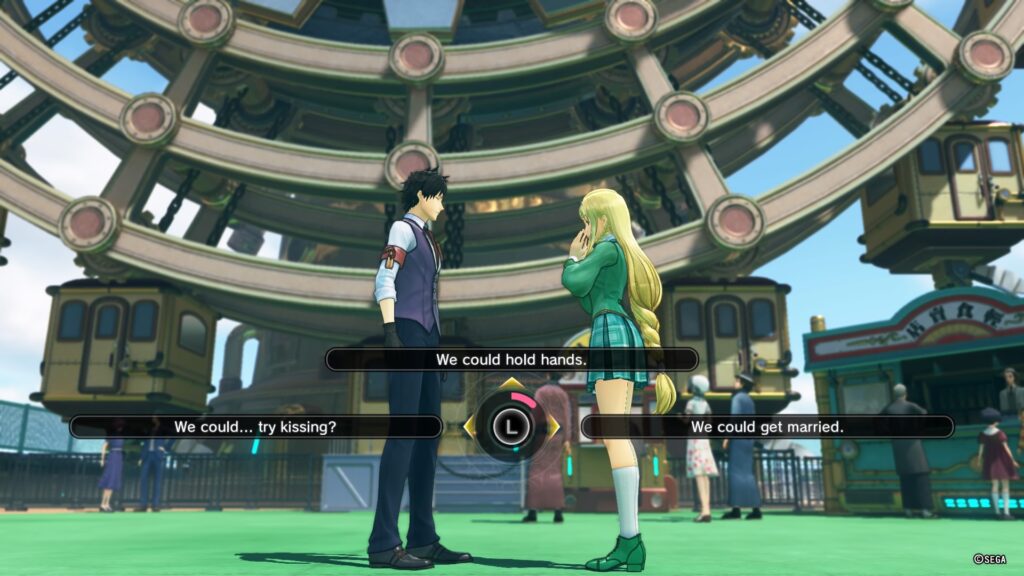
LIPS is essentially a fancy way of saying timed dialog options. Almost every scene has at least one LIPS moment that includes two or three dialog options. Your choice can raise or lower a character’s opinion of Seijuro.
When it comes to the main girls, raising their motivation level with correct choices makes them better in battle, and ultimately leads to the romantic options later on. For all the side characters, maxing out their positive opinions of Seijuro will unlock extra scenes with them later in the game.
There is a new variant of LIPS introduced as well, called Analog LIPS. In these segments, you have a limited amount of time to raise or lower a bar with the analog stick to get the “correct” choice.
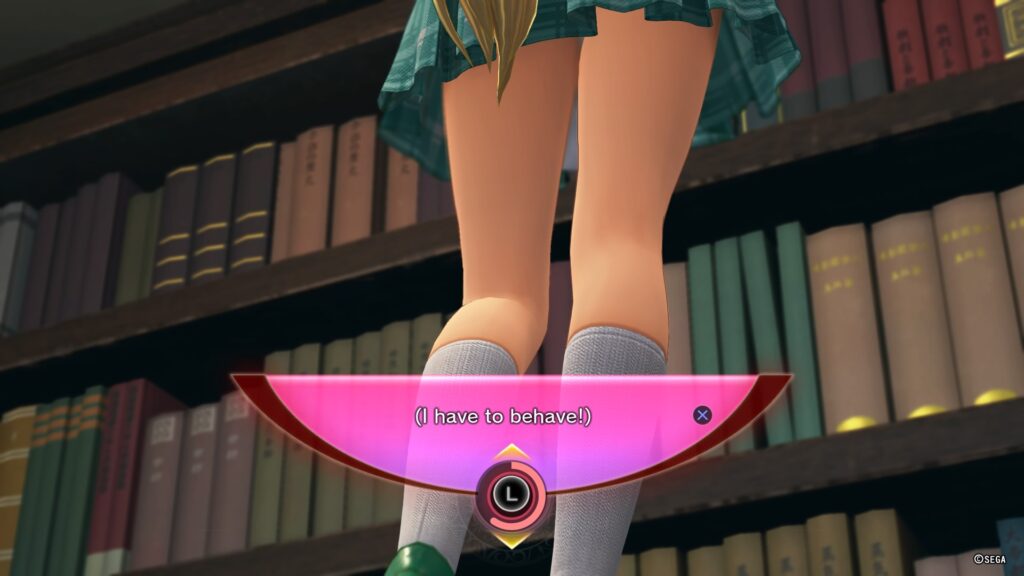
Sometimes you’ll want the bar all the way at the top, while other times you want it in the middle or bottom. It all depends on the situation, and how you think the character you are talking to will respond.
Aside from all the normal conversations, there are also Trust Events. These are first-person, private conversations between Seijuro and one of the Flower Division girls. They often come up at times in the story when that character is feeling particularly down.
Usually you’ll need to move a cursor around the screen, finding objects in their room to make small talk before they open up about their inner struggles and insecurities. These scenes also tend to advance the romance subplot with that character, and can lead to such incredibly lewd actions as hand holding, head pats, and words of encouragement.
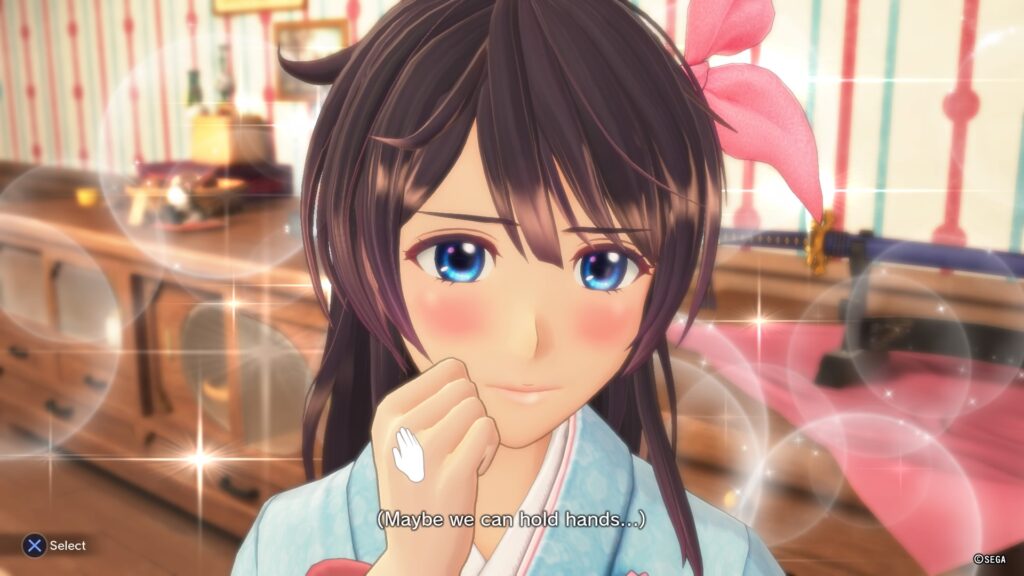
Between main story moments and cutscenes, you’ll have a chance to explore Ginza. Aside from the Imperial Theater itself, there are about a half dozen areas to travel to.
For the most part you will just be running errands, doing quests, or interacting with characters, but there are things like newspapers that you can read as well.
There are also bromides hidden all over the place, too. These collectible cards show pictures of various characters, and Sakura Wars veterans will no doubt be happy to see that a large chunk of them contain scenes from the previous games.
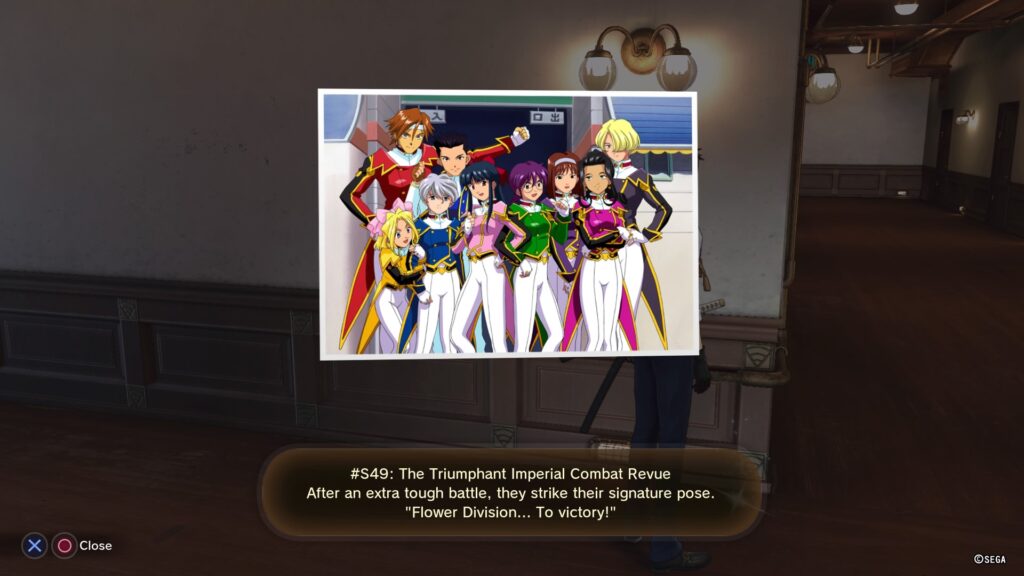
Seijuro carries a handy little device called a Teletron, which is essentially a steampunk smartphone, that acts as the game’s menu. You can pull it up while exploring to see where you can find your current objective. Each character is also displayed on your map, with helpful symbols like exclamation points or hearts to let you know about available conversations or Trust Events.
The Teletron also has a fun little minigame called Koi-Koi Wars. In it, you face off against the various characters in a game of Koi-Koi, a Japanese card game played with Hanafuda cards.
You and your opponent take turns collecting matching Hanafuda to build special sets of cards worth varying degrees of points. Once you have built a set, you can choose to stop while you are ahead, or keep going for extra points at the risk of your opponent building a set first.
You’ll periodically unlock new opponents, and also gain money for winning matches that can be used to unlock various additional features, like new soundtracks. Much like Gwent in The Witcher 3, it’s a cute distraction that you can potentially put many hours into by itself.
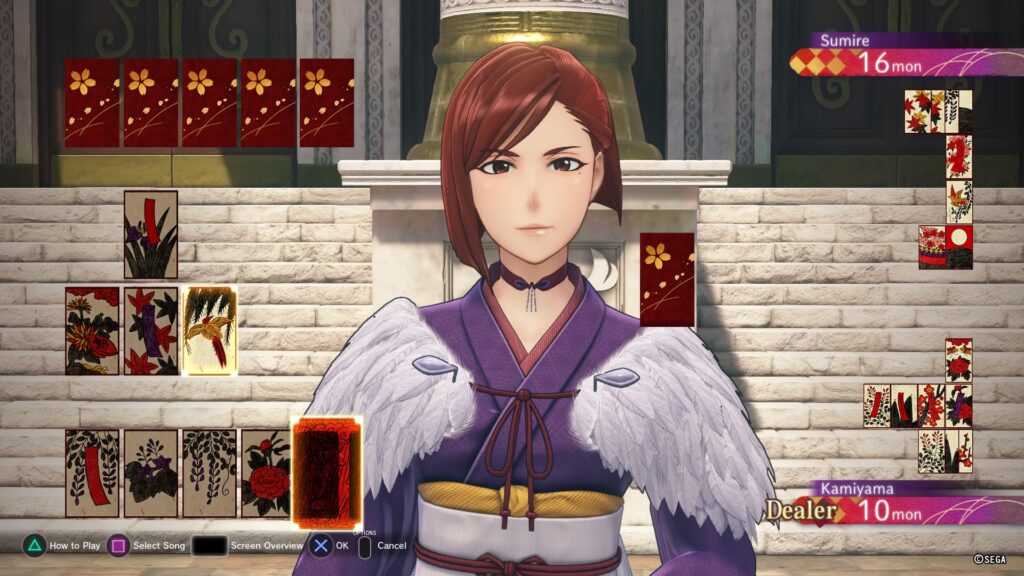
When you aren’t chasing waifus or wasting time on your virtual phone, you are defending Tokyo from demons. The combat in Sakura Wars is a huge departure from its predecessors, which might be a good or bad thing, depending on who you ask.
Instead of going with a turn-based, tactical RPG-style system (as past games have), the new Sakura Wars is a fast-paced hack ‘n slash. This is something more along the lines of Dynasty Warriors.
Every chapter usually has a big fight sequence at some point, be it the Flower Division fighting hordes of demons in the nether realm, or competing against another Combat Revue in the arenas of the World Games. The battle sequences in the demon realms usually involve a linear string of rooms and corridors that close off so you can fight your way through hordes of enemies.
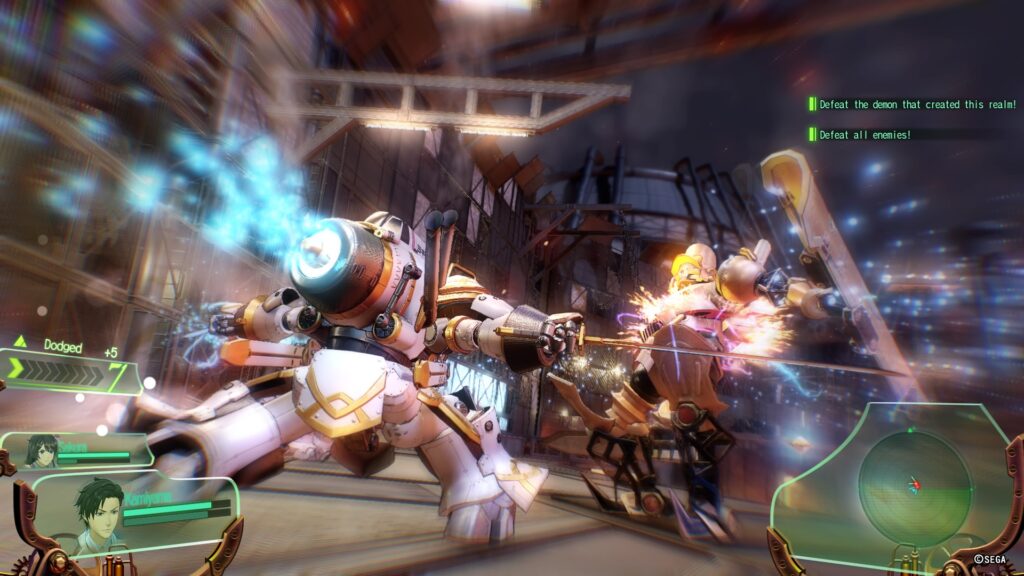
There are also raids, which are short and optional battles that pop up from time to time. These always pair you up with one of the Flower Division girls, and involve fighting a few waves of enemies in the streets of Ginza. They are usually over in just a few minutes, and getting a good score in them will raise your relationship with that girl.
Each of the six main characters have their own unique Mugen, the latest evolution of the Kobu mecha from the older games. The characters have clearly defined combat styles, complete with a light attack and a heavy attack that can be chained together to make combos. There is also a dodge move, a dash, and aerial combos.
A perfectly-timed dodge allows you to momentarily enter a bullet time-like state, giving you a chance to get in some free combos against enemies. If the larger foes are sufficiently weakened while you are in slow-mo, you can also hit the triangle button to perform an execution move to finish them off.
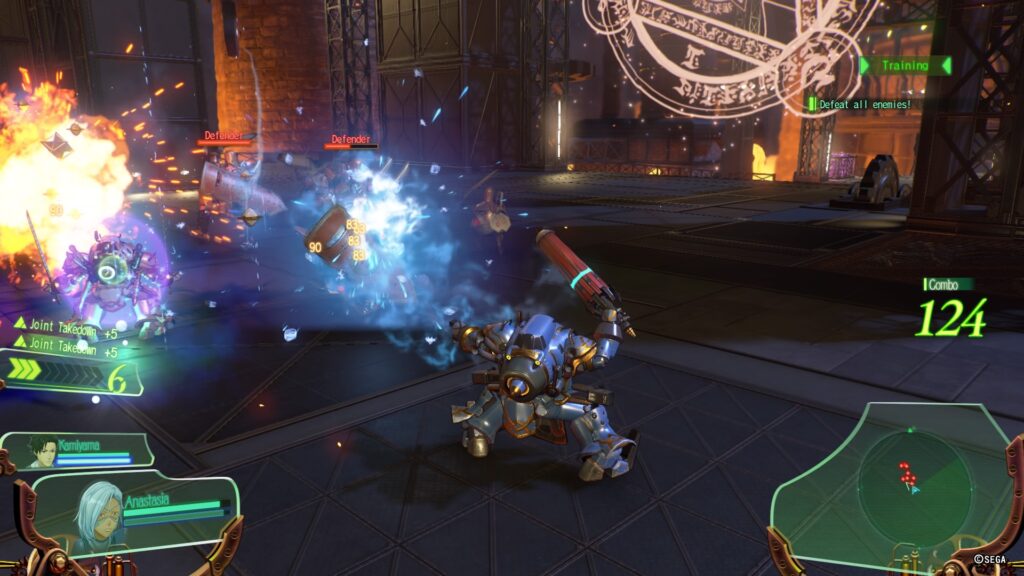
Most of the time, battles will consist of Seijuro, and one of the main girls as dictated by the current story mission. You can freely swap between them at will, and as you rack up kills without being damaged, you’ll build up a morale meter that makes your AI partner fight harder. Taking damage reduces the meter.
There are two types of special moves at your disposal as well. As you defeat enemies, they’ll drop MP gems that build your special meter. Each character has their own unique and flashy special attack that is often capable of clearing the screen of enemies, or dealing heavy damage to bosses.
The other special move in you arsenal are team attacks. These are limited to once per level, and when activated, give Seijuro and his partner a massive stat boost for a few seconds. Each team attack is accompanied by a cute little animated cutscene between Seijuro and that particular girl that are fun to watch the first few times, and can then be skipped after you’ve seen them.

Later on in the game, you gain access to a training machine that allows you to replay previous missions, and can freely pick the girl you bring along here. Getting S ranks on missions helps boost your motivation level with a particular girl. You can also unlock new bromides in the combat simulator, so there are reasons to replay these old missions.
This new combat system, while a big departure from the previous games, is still pretty fun. Most rooms have tons of enemies to fight through, and the attacks are all bright, flashy, and well-animated. The game also does an admirable job of making each character’s combat style feel different, especially Claris and Anastasia because they are ranged combatants.
That said, there are quite a few things to complain about. First of all, many of the levels are a bit dull. Much like the city portion of the game, there isn’t really anything to explore in the combat levels. Sometimes the game will spice things up with platforming or hazards, but most of the time you are just going from one fight to the next along a linear path.
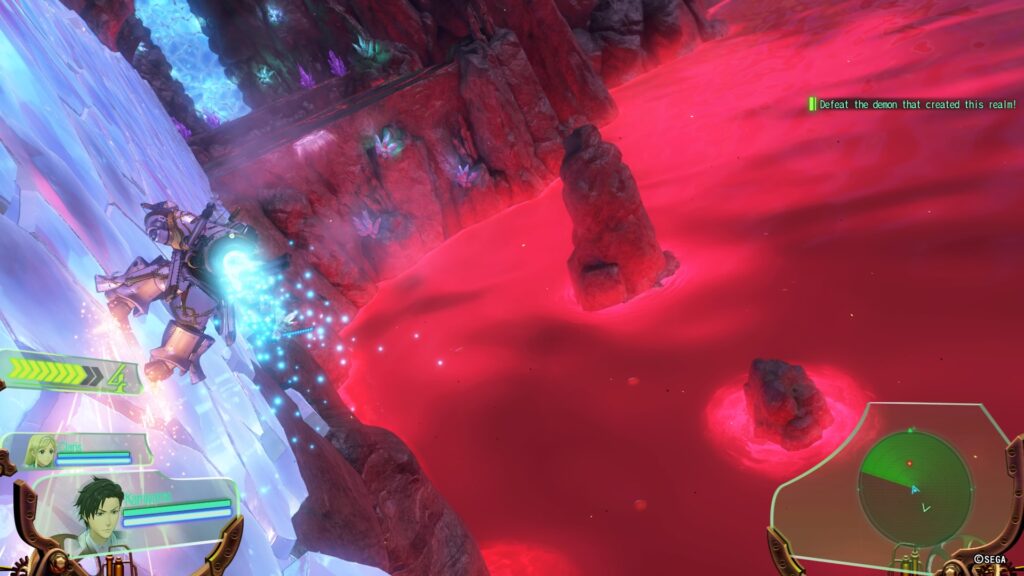
Enemy variety is a bit on the slim side too, with later levels taking the “Remember the boss of the first level? Now you get to fight two at once!” approach. There is also one particular character that you fight three or four times in the game. His attack pattern is slightly different each time, but you are still basically doing the same fight over and over again.
The larger issue is that the game is just really, really easy. Theoretically, when a character’s HP runs out, you have to take control of the other character as their health slowly regenerates. In practice, I don’t think I ever actually had a character get incapacitated.
Health drops are fairly plentiful, and many of the enemy attacks are telegraphed in such a way that they aren’t super difficult to avoid. The special attacks are also kind of overpowered. If you have one ready for the boss fight at the end of the level, then chances are you can melt that boss with the press of a button.
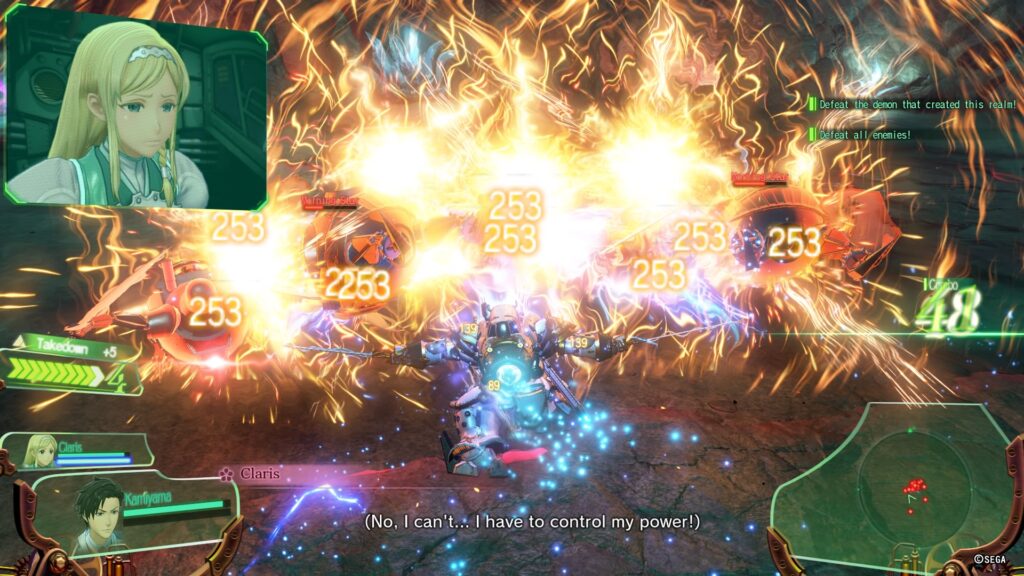
One other thing to note is that there isn’t any stat tweaking, character progression, loot, or mecha customization. I haven’t played the previous games so I have no idea if this was ever a thing for the franchise, but I was hoping there would be a bit more RPG elements in this regard.
The new Sakura Wars certainly has its rough patches. The story and characters conform to a lot of common anime clichés, some plot points are extremely predictable, and the combat is a bit too easy, but the game still managed to hold my attention the whole way through.
Even if their arcs aren’t anything new, it was still fun to see all the characters grow and mature throughout the story. All of the main girls are likeable in their own way.
No matter which waifu you choose, there are bound to be plenty of cute and wholesome interactions with them throughout the game. It’s a bit of a shame that many of the side characters aren’t fleshed out more, because most of them are compelling as well.
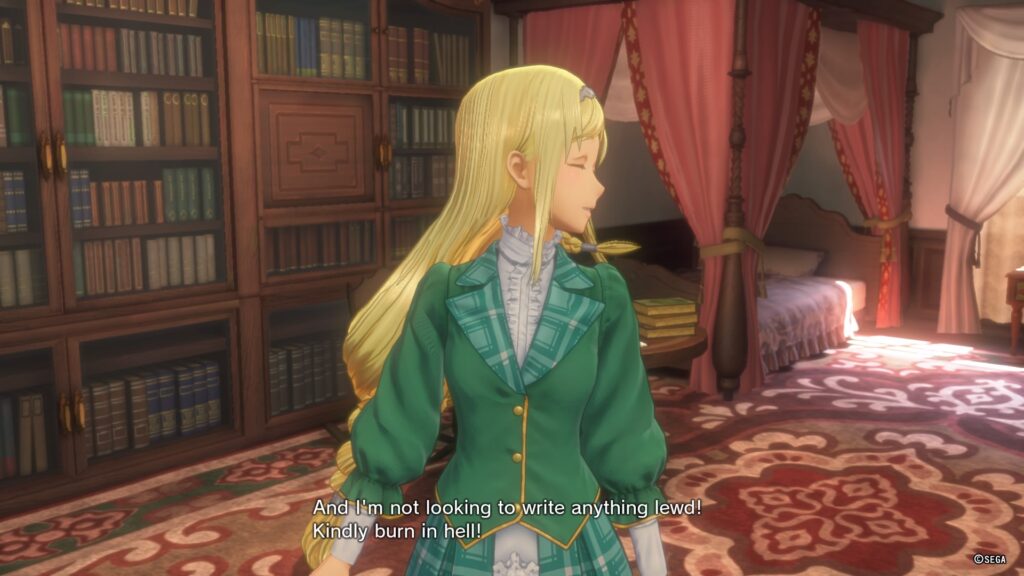
For many people, Sakura Wars will probably be the first time they’ve ever played, or possibly even heard of, the franchise. In that regard, it does a good job of acting as a starting point. It eases newbies into the franchise’s world, but also features lots of callbacks and cameos to the older games that will probably satisfy existing fans in one way or another.
If you like the idea of an alternate 1940s with steampunk mecha, demons, and a harem of cute anime girls, then you’ll probably find a lot to like in Sakura Wars, despite its flaws.
After completing the game, I was disappointed to realize just how hard it is to get into the rest of the franchise. I started watching the original anime, but the games themselves aren’t exactly accessible for a westerner that doesn’t have some really old hardware laying around.
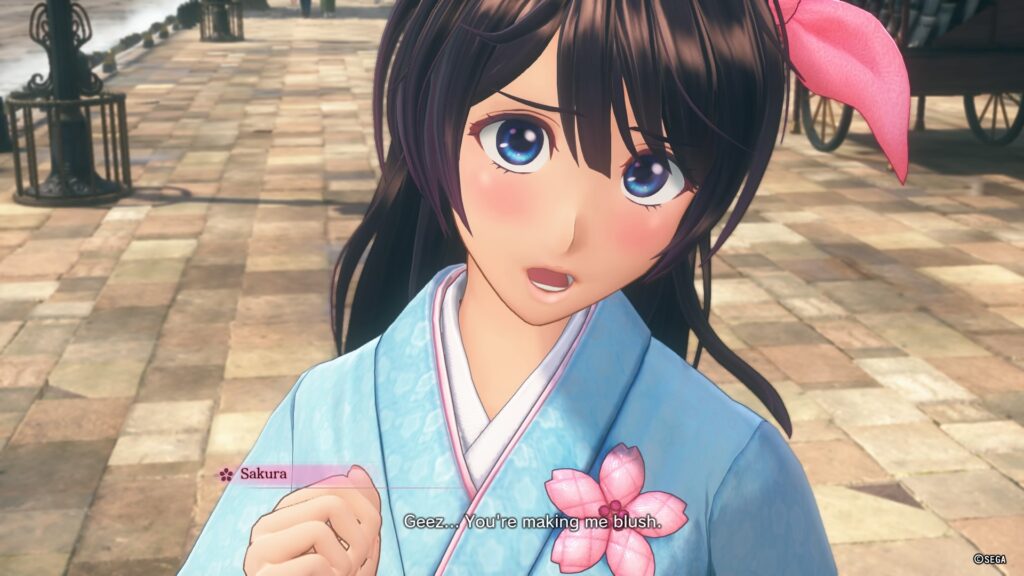
I hope that Sega uses the revival of the franchise as an opportunity to bring the old games to newer hardware, and in English as well. As a newly-recruited fan of the series, I hope that we’ll be seeing more from this previously dormant franchise in the near future.
Sakura Wars was reviewed on PlayStation 4 using a review copy provided by Sega. You can find additional information about Niche Gamer’s review/ethics policy here.